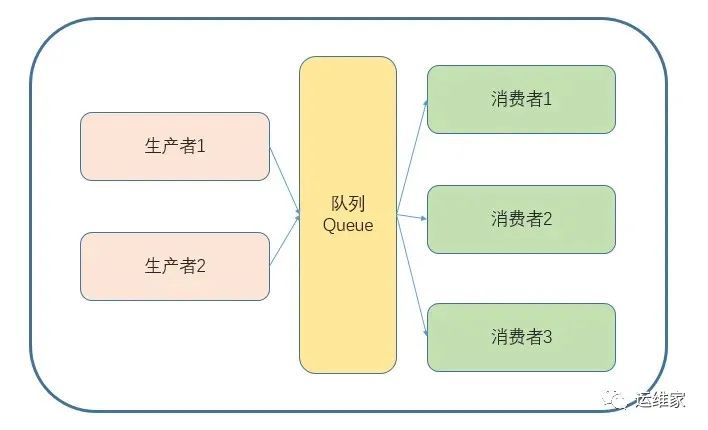
1、lock版本生产者和消费者
生产者和消费者是多线程开发中经常遇到的一个模式。生产者专门用来生产一些数据,然后存放到一个变量中。消费者再从这个变量中取出数据进行消费。因为中间经常是一些全局变量,故而经常使用锁来保证数据的完整性。
我们通过一个money的例子来认识下。
首先,我们假设有一个家庭,初始资金有1000元,有3个人在挣钱,两个人在花钱,挣的钱我们就存到银行,消费的也从银行消费。就这样一个简单的例子来认识下生产者和消费者吧。(我们假设时间短一点儿哈,假设能挣钱5次吧,这样子比较简单直观。)
我们首先简简单单先来写个小框框,如下:
# Lock 生产者和消费者
import threading
# 生产者
class producter(threading.Thread):
def run(self):
pass
# 消费者
class consumer(threading.Thread):
def run(self):
pass
def main():
for i in range(3):
producter(name='生产者-{}'.format(i)).start()
for i in range(2):
consumer(name='消费者-{}'.format(i)).start()
if __name__ == '__main__':
main()
然后我们稍微完善一下子,然后代码就变成了下面的样子:
import threading
import random
import time
Total_money = 1000
A_lock = threading.Lock()
Get_money = 5
Count = 0
# 生产者
class producter(threading.Thread):
def run(self):
global Total_money
global Get_money
global Count
print("我是{},我来挣钱了。".format(threading.current_thread()))
while True:
A_lock.acquire()
if Count < Get_money:
product = random.randint(5000, 10000)
Total_money += product
print('{}挣了{}钱,银行总金额为{}元。'.format(threading.current_thread(), product, Total_money))
Count += 1
time.sleep(1)
A_lock.release()
else:
A_lock.release()
break
# 消费者
class consumer(threading.Thread):
def run(self):
global Total_money
global Get_money
global Count
print("我是{},我来消费了。".format(threading.current_thread()))
while True:
consume = random.randint(2000, 10000)
A_lock.acquire()
if Total_money >= consume:
Total_money -= consume
print('{}花了{}元,银行剩余{}元。'.format(threading.current_thread(), consume, Total_money))
time.sleep(1)
A_lock.release()
else:
if Count <= Get_money:
print('{}想花{}元,银行剩余{}元,不足消费,且生产者不生产钱咯,破产咯!!!'.format(threading.current_thread(), consume, Total_money))
A_lock.release()
break
print('{}想花{}元,银行剩余{}元,不足消费,没办法花钱咯!!!'.format(threading.current_thread(), consume, Total_money))
A_lock.release()
def main():
for i in range(3):
producter(name='生产者-{}'.format(i)).start()
for i in range(2):
consumer(name='消费者-{}'.format(i)).start()
if __name__ == '__main__':
main()
运行结果如下:
我是<producter(生产者-0, started 6468)>,我来挣钱了。
<producter(生产者-0, started 6468)>挣了5954钱,银行总金额为6954元。
我是<producter(生产者-1, started 23940)>,我来挣钱了。
我是<producter(生产者-2, started 13540)>,我来挣钱了。
我是<consumer(消费者-0, started 8200)>,我来消费了。
我是<consumer(消费者-1, started 10524)>,我来消费了。
<producter(生产者-0, started 6468)>挣了5931钱,银行总金额为12885元。
<producter(生产者-0, started 6468)>挣了5609钱,银行总金额为18494元。
<producter(生产者-0, started 6468)>挣了6990钱,银行总金额为25484元。
<consumer(消费者-1, started 10524)>花了3848元,银行剩余21636元。
<producter(生产者-1, started 23940)>挣了6851钱,银行总金额为28487元。
<consumer(消费者-1, started 10524)>花了9547元,银行剩余18940元。
<consumer(消费者-0, started 8200)>花了4626元,银行剩余14314元。
<consumer(消费者-1, started 10524)>花了7766元,银行剩余6548元。
<consumer(消费者-0, started 8200)>想花6608元,银行剩余6548元,不足消费,且生产者不生产钱咯,破产咯!!!
<consumer(消费者-1, started 10524)>花了2812元,银行剩余3736元。
<consumer(消费者-1, started 10524)>花了2771元,银行剩余965元。
<consumer(消费者-1, started 10524)>想花8104元,银行剩余965元,不足消费,且生产者不生产钱咯,破产咯!!!
2、Condition版本生产者与消费者模式
当我们使用lock版本的生产者和消费者的时候,会发现一个问题,就是说当你消费者消费的金额不足的情况下,但是生产者生产数量还小于我们设定的 5次的时候,这个时候呢,他不满足我们设定的break方法,那么就会一直处于一个长时间死循环的一种情况。但是加锁解锁又是要消耗CPU等性能的,所以在这个情况下,我们的Condition就应运而生了;
Condition和Lock相比有什么区别呢,就是Condition添加了一个**wait机制,那么Condition的wait机制是什么呢?他就是用来当不满足指定条件、且也不满足该线程停止的条件时,让该线程处于一个等待状态**,不让它运行了,一直等到有“人”通知他的时候,他将再次运行起来。
回归到咱们这个例子的情况下就是,在生产者生产金钱的次数,不足5次的时候,消费者消费的金额已经将银行里面的钱花完了,那么当他再次消费的时候,就让他处于wait状态,让他等着,不是说不让他花钱了,是让他等着生产者生产金钱之后通知他,他再继续消费,在某些情况下将大大减少性能的浪费。
方法:
import threading
A_Condition = threading.Condition() # 生成Condition锁
A_Condition.acquire() # 上锁
A_Condition.release() # 解锁
A_Condition.wait() # 让该线程等待
A_Condition.notify() # 解锁指定等待的线程,默认是第一个线程
A_Condition.notifyAll() # 解锁所有处于等待状态的线程
注意:
notify和notifyAll是不会释放锁的,所以他的运行应该在release之前。
所以当我们上面的例子,使用了Condition方法之后的代码应该是这样子的:
剩余内容请转至VX公众号 “运维家” ,回复 “185” 查看。
------ “运维家” ,回复 “185” ------
------ “运维家” ,回复 “185” ------
------ “运维家” ,回复 “185” ------
系统运维工程师,运维工程师技能要求,成都运维工程师驻场开发收费标准,t3网络运维工程师,运维工程师社会需求,运维工程师修炼手册;
oppo高级运维工程师社招,运维工程师员招聘要求,中级运维工程师技术水平,大数据运维工程师月薪多少,运维工程师的个人发展计划,应届生面试运维工程师穿着;
系统运维运维工程师,中国移动网络运维工程师笔试,徐州市苏宠集团运维工程师待遇,云南运维工程师培训班;
监控系统运维工程师,高铁运维工程师是正式工 吗,郑卅软件运维工程师招聘,运维助理工程师好不好。























 751
751











 被折叠的 条评论
为什么被折叠?
被折叠的 条评论
为什么被折叠?










